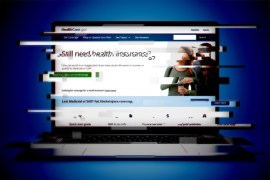Dr. Robert Galvin is chief executive officer of Equity Healthcare, where he works with executives of nearly 50 companies that purchase health coverage for 300,000 people. Galvin says the 2010 Affordable Care Act has made employers more engaged in health benefits while encouraging their workers to be savvier health care consumers.
“I think what the ACA has done more than anything is it has made every employer examine their strategy and in every case it’s bringing the CFO and the CEO” into decisions about the company’s health care, which often didn’t use to happen, he said.
Galvin also sees the move to offer workers plans with limited numbers of doctors, hospitals and other providers as increasing, but says most companies are eager to make sure those networks offer adequate quality assurances and that employees are given the option of using other providers if they want to pay more for their care.
Equity Healthcare is a wholly owned subsidiary of Blackstone, a global investment and advisory firm.
Galvin spoke recently with KHN’s Mary Agnes Carey to discuss the Affordable Care Act and how it is changing the way companies of all sizes purchase health insurance. What follows is an edited transcript of that conversation.
Q: How is the Affordable Care Act changing how employers buy health care?
A: The basic thing it’s done for every employer is it’s focused their strategies. It’s made them decide what they want to do. It’s given them options, on the one hand, and it’s kind of crystalized their obligations on the other.
Q: Do small employers think differently about health care than larger employers?
A: It’s very hard to talk about employers [as a single group]. You really have to stratify. My advice to everyone is if someone says ‘employers’ without stratifying, don’t listen to them.
The very large companies – the GEs, the Verizons, the IBMs, Neiman Marcus, Michael’s– they have some turnover but have largely stable populations and labor markets where health benefits are competitive. Those folks are doubling down on their efforts to manage their employee benefit costs. And that’s where you see a lot of creative benefits, value-based insurance design, some of these on-site medical clinics. That’s where you hear about all of this interesting stuff going on.
Q: We’re hearing a lot these days about narrow networks. While they existed before the ACA, how are employers using tools like narrow networks or high-deductible plans to control costs?
A: Those employers who are going to stay in the game – which is the majority of them – in many cases have to [improve] what they’re covering. They have to offer the essential health benefits, they must meet affordability for the premiums and they have a looming Cadillac tax [on very generous health plans] in 2018. They now have to use the managed care tools that they all abandoned 15 years ago.
So the answer is narrow networks – we now call them “performance networks” – they are definitely increasing in popularity. And I think what we’re trying to do differently this time is to make them performance [based] and not just narrow.
My employers ask, “How is quality factored in?” If you look at how the big national plans are doing it, it’s a very different algorithm than you had in the ‘90s and this one essentially takes performance quality [into account].
The second change from the ‘90s is always offering options outside of the narrow network. So rather than “Here’s your narrow network, that’s it,” it’s, “Here’s your performance network that is going to be less expensive for you. If you want to, [you have the option] of paying considerably more money, and getting to another network, or another physician.”
I think what we learned in the ‘90s was that Americans want choice, even if it’s the wrong choice.
On the high deductible side, there’s absolutely a move in that direction. The way we think about it, we’re trying to make more informed consumers. The shifting of the cost is one way to look at it. The other is ‘You need an MRI scan of your shoulder. And it could be $600 at a free-standing imaging building or $1,200 at the hospital.’ And the company says, ‘You’re paying the first $1,500, employee.’ Is that cost shifting when the employee goes to get the[service for] $1,200 or is it smart consumerism when they go to get the $600?
This is a more intelligent way of getting people more involved in their health decisions. I think the thing to watch, honestly, is the full replacement high deductible. [There’s] no [preferred provider option], no point-of-service. All you have is a high deductible. There’s still in and out of network but what it means as an employee is you can’t choose between a PPO where you pay $20 to see your doctor or a high deductible where you’ll have to pay $120. The only option you have is the high deductible. About 20 percent of the commercial companies have that. The key thing to watch is how many companies basically only offer high deductibles. It’s about 20 percent now but I think that’s going to grow double-digits every year.
Q: Does the ACA need the employer mandate to work?
A: My bottom line feeling about that is no. What I’ve liked about the employer mandate is that it’s focused everyone’s attention and companies are getting much sharper about thinking about health care. It’s good for affordability, it’s good for everything. But I don’t think they need an employer mandate. It’s causing disruption in the labor force [as employers seek to avoid having to provide insurance to employees by keeping their hours to] under 30 hours per week. Don’t underplay that. That’s happening quite a bit. It’s on every employer’s plate.
I think people in government have absolutely no idea what kind of work and complexity [employers face] for what seems like a simple regulation. In terms of who’s eligible, who’s tracking hours, doing the look back, what you have for HR systems to manage the reporting requirements, actually administering that is a nightmare.
Q: How do employers help their employees understand more about the health care they’re purchasing?
A: The first thing is they need to make employees price sensitive. Time has shown that all the education you can give someone really only impacts a small percent of employees who are interested anyway.
With more price sensitivity is an obligation, if you want the market to work, for information. And information that works for individuals. More companies are giving [employees] access to health navigators, or health coaches. So that if you look at information on the computer or you don’t have broadband or you don’t know what it means, you have someone to call who can walk you through it.
It’s a real need in the market to be able to call a navigator or a coach, not through an insurance company, but a free-standing company and have that person help employees figure things out. [Things like], “Can you help me find an MRI scan in this area” or “Help me understand how to figure out who is best at diabetes.”
Along with price sensitivity has to come the support.








